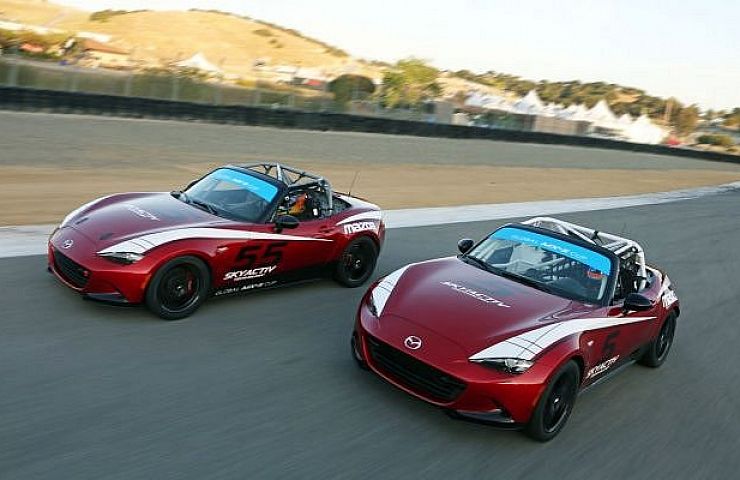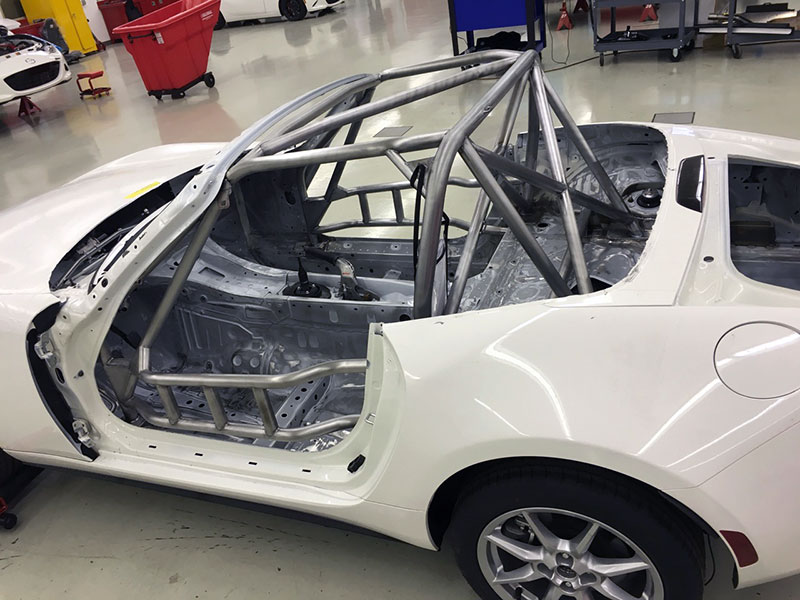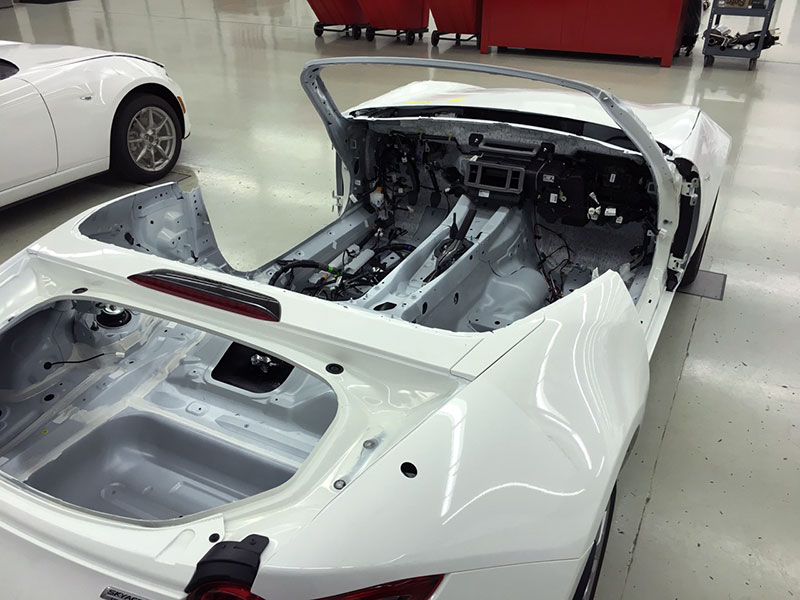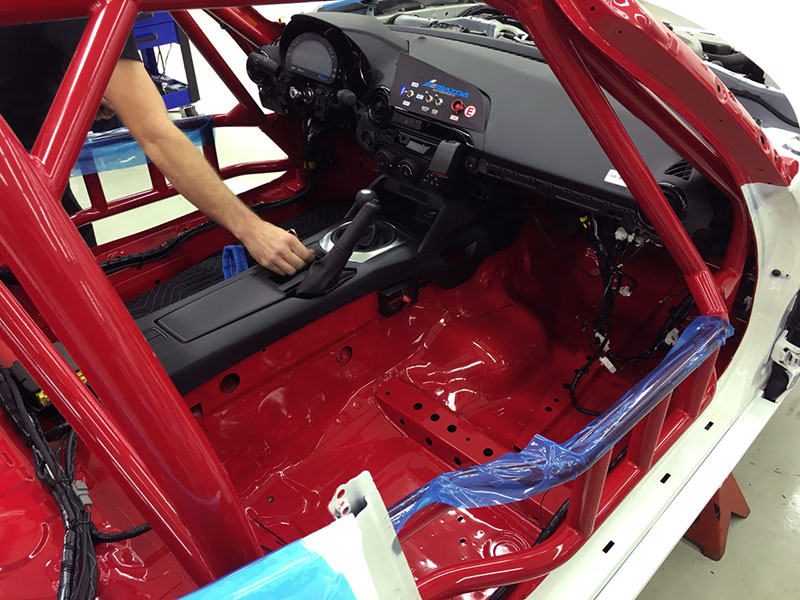The Mazda Miata’s presence in club racing is pervasive. In fact, Mazda accounts for 58 percent of all vehicles raced at Sports Car Club of America (SCCA) events, and most of those vehicles are MX-5s. Each of the four generations of Miata has come with a new and improved spec racing package, the newest of which is a dedicated track car available through Long Road Racing—Mazda performance specialists based in Statesville, N.C.
“Mazda came on the club racing scene in the early 1990s, shortly after the first-generation Miata was introduced in ’89,” said John Doonan, motorsports director for Mazda North America. “Racers appreciate the car’s excellent front-to-rear weight balance and rock solid reliability. Because the grassroots community has grown so big, there’s always someone to race against.”
Initially, converting a Miata into a spec racer was a DIY affair. Mazda Motorsports continues to sell conversion kits through Mazda Motorsports for the first three generations of MX-5. The kits include springs and dampers, more open intake and exhaust systems, and sway bars. For the first two generations, owners choose their own safety equipment, i.e. roll cage, fire and battery protection. The third-generation spec racer kit designed for the Pro series requires a specific roll cage.
The Global Cup car developed for the fourth-generation Miata, introduced for the 2015 model year, is the first time Mazda has offered a fully-prepared track car out of the box.
The production Miata includes some aerodynamic improvements that enhance the car’s high-speed performance. “During the initial stages of development we came to an understanding of what is good aero and what is bad aero,” said Ken Saward, design group manager for Mazda’s R&D facility in Irvine, Calif. Those familiar with prior iterations will notice that the wheels of the newest MX-5 are pushed further to the corners with more bulging fenders.
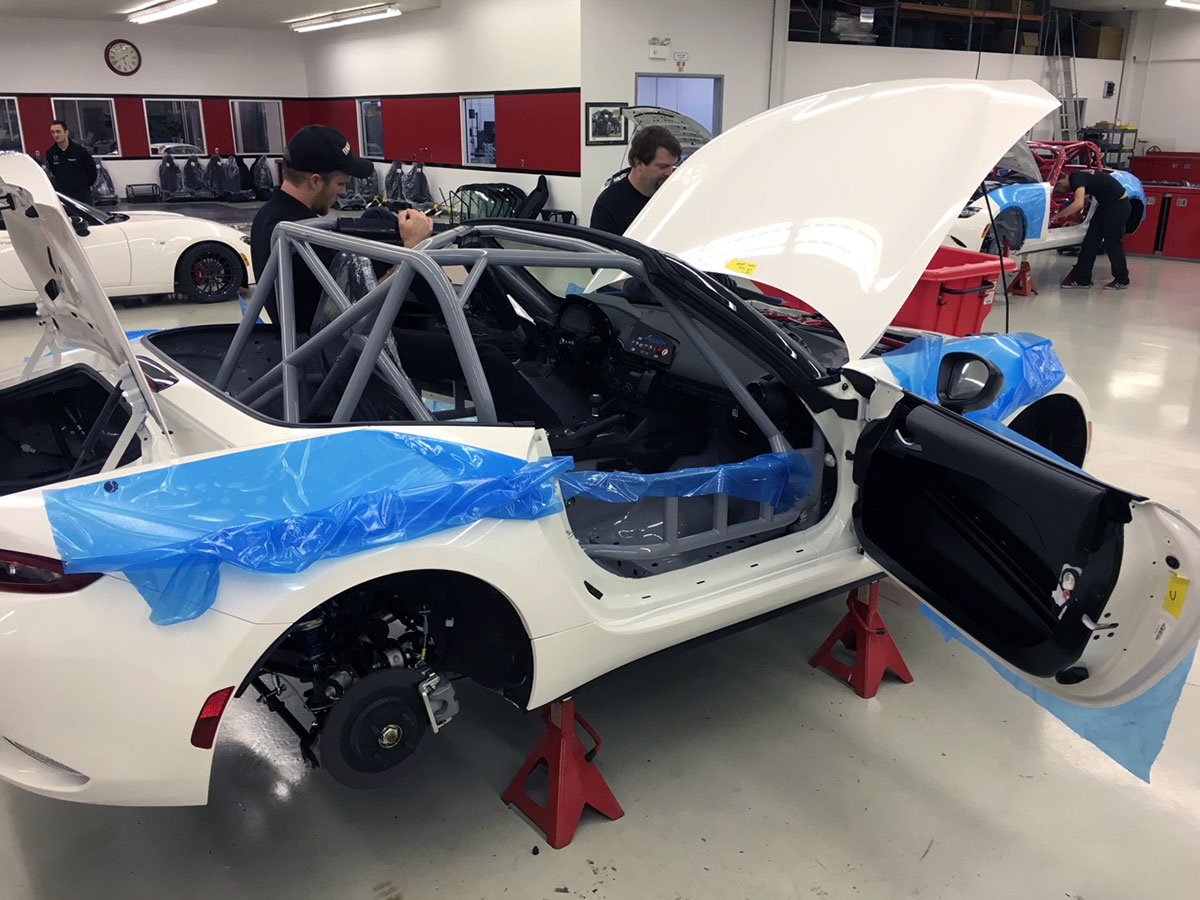
Detailed final assembly begins. The customer chooses an interior color (default color is gray). Final installation includes battery tender, battery, Brembo Brakes, RAYS wheels, BF Goodrich tires.
The design team worked with engineers to improve aerodynamics under the chassis with a full belly pan. They also increased the rake of the A-pillars to decrease turbulence around the edges of the windshield and the side mirrors. Mazda engineering developed the Cup car prototype using three mules: one used for fitment and two that underwent 9,000 miles of track testing.
Mazda ships base-model Miatas from Japan to Long Sports where the build-out of the production Cup cars take place. The MSRP for the track version is $53,000. Because the cars are not street-legal, they are not titled and do not carry a factory warranty.
Long Road technicians strip out the carpeting, sound insulation, and seam sealer from the stock Miata before installing a spec roll cage. The car fitted with the cage is designed to fit up to a 6’5” driver. Since the passenger seat is removed, there’s a 200-pound weight block on that side to balance the chassis.
Technicians replace the stock radiator with a racing radiator and install a new differential cover so both can accommodate auxiliary cooling systems. The differential, transmission and engine covers are sealed. Sensors attached to the factory seals let racing series officials know if the owner has modified any of those components.
The fire extinguisher and battery with a protective cover are located in the trunk. Mazda selected Multimatic to produce the Miata’s dynamic dampers and Pagid brake pads. The vehicle maintains the same Brembo discs and calipers as the standard road car. Long Road technicians cut grooves in the discs to improve cooling at the racetrack.
The Cup car rides on Rays wheels and BF Goodrich tires. Owners choose interior and exterior colors to customize their cars’ appearance. Vehicles are delivered with the driver’s seat from the base model car, so the owner can add a choice of racing seat. Long Road does a complete inspection of each Miata including a chassis dyno run before delivery.
The first Global Series Cup Car races are slated for the end of April at Mazda Raceway at Laguna Seca in Monterey, Calif. The finals take place at the same track in September.

